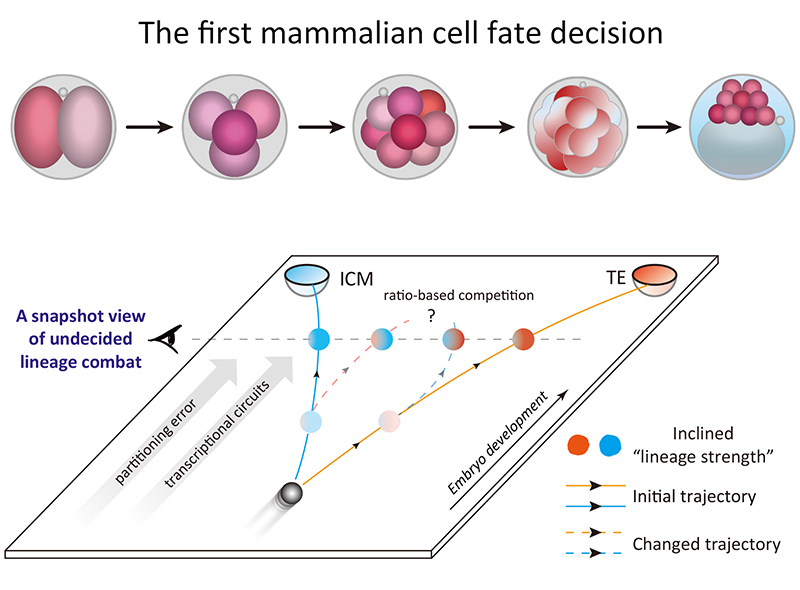In mammalian preimplantation embryo development, when the first asymmetry emerges and how it develops to direct distinct cell fates are two longstanding questions. It remains debatable whether the first bifurcation of cell fate emerges randomly at morula stage, or has been predetermined at earlier stages before morphological distinction.
A collaborative team lead by Institute of Zoology, Chinese Academy of Sciences have now combined mathematical modelling and single-cell RNA-seq analysis to systematically analyzed the single-blastomere transcriptome symmetry-breaking process though early mammalian embryo development (from both mouse and human), and they showed that the earliest blastomere-to-blastomere biases emerges with the first cleavage division due to random segregation; but the following zygotic transcriptional activation triggers transcriptional regulation that fine-tunes these small biases into more defined manner, minimizing or amplifying the initial biases with negative or positive feedbacks, representing “monostable” (ubiquitous expression between blastomeres) or “bistable” patterns (strongly asymmetric between blastomeres), with the latter being a potential driving force for transcriptional symmetry-breaking in embryo development.
Moreover, the research team further bring up a scenario that opposing lineage specifiers within an early blastomere constantly compete with each other based on their relative ratio, forming an inclined “lineage strength” that push the blastomere onto predisposed, yet flexible lineage track before morphological distinction. Which revealed mammalian early embryo symmetry-breaking as a continuous process rather than a sudden emergence, with the driving force involves both chance separation and defined transcriptional circuits.
These analysis represents a major step in explaining the very first symmetry-breaking in pre-implantation mammalian embryo development, which is one of the central concerns in developmental biology. The symmetry-breaking process reveal in present study may also be widely applicable to other stem cell systems.
This work entitled “Dynamic transcriptional Symmetry-Breaking in Pre-implantation Mammalian Embryo development revealed by single-cell RNA-seq” is now published online in Development

Chance separation and defined transcriptional circuits drive the very first mammalian embryo symmetry-breaking.

